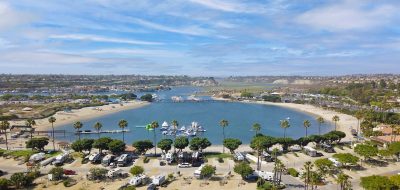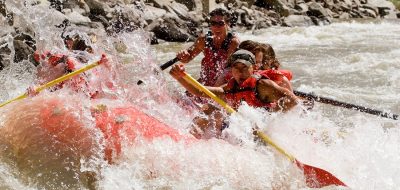
Just west of Lone Pine, California, and US 395, in the shadow of Mount Whitney, a string of rocky outcroppings known as the Alabama Hills offers the adventurous RVer a landscape that’s almost otherworldly.
Here you’ll witness big boulders piled upon bigger boulders, balancing acts rarely seen and thousands of caves and cubbyholes. You’ll also find recognizable terrain from 386 movies, thousands of commercials and innumerable TV shows. Movie productions from Gunga Din to Gladiator have called the Alabama Hills and the surrounding Owens Valley home. Even Tarzan left Culver City to film a couple of movies here.
Driving along Movie Road—an accessible two-lane dirt strip that parallels US 395—inspires déjà vu as you get a look at the shooting locations of so many motion pictures. Even first-timers to the area swear they’ve been here before, as every bend in the road brings another familiar scene.
To find Movie Road, go west of Lone Pine on Whitney Portal Road. Turn north at the movie monument plaque. This is public Bureau of Land Management property, so choose a flat spot, roll out your awning and lean back to enjoy the snowcapped Sierra Nevada to the west, the White Mountains across the Owens Valley and the rocks of the Alabama Hills. Unleash your inner child and imagine the rocks and boulders as goblins, horses, fortresses or anything else under the sun.
If you prefer hookups to dry camping, you’ll find several RV parks in and around Lone Pine, including Boulder Creek RV Resort, a top-rated Good Sam Park.
Continue west up Whitney Portal Road to the trailhead for hikes on Mount Whitney, the highest peak in the Lower 48. The full hike is an endeavor only for those who are extremely fit, and you’ll need a permit to make the trek from May 1 to November 1. During permit season, the trail is limited to 195 hikers on any given day.
Back on US 395, be sure to visit the Museum of Lone Pine Film History to explore the costumes, cars, props, posters and other movie memorabilia on display. This collection tells the story of filming in the region from the early days of Fatty Arbuckle to modern blockbusters such as Iron Man. Make sure you download the BLM’s Movie Road self-guided tour.
US 395, the highway that doubles as Lone Pine’s Main Street, is an interesting place in itself and a worthy drive. The route connects to the U.S. borders with Mexico and British Columbia and flows through three states along the eastern slopes of various mountain ranges.
Following 395 north a few miles out of Lone Pine, you’ll find Manzanar National Historic Site. Take a moment to walk around the internment camp and reflect upon the many Japanese-Americans housed here during World War II. It’s a beautiful location, despite the unhappy history.
The Owens River that runs through the valley was ravaged by the Los Angeles water department in the 1930s when they built the first aqueduct to haul water from the Sierra range to thirsty Los Angeles, events that inspired the movie Chinatown. Department employees dynamited beaver dams, decimated lakes and almost turned the Owens Valley into a dust bowl.
Fortunately, the federal government stepped in several decades ago. Although it has never regained its former glory, the Owens Valley has recovered nicely and is now wet enough to support a healthy mosquito population (bring plenty of repellant).
If you schedule a trip to the Owens Valley, consider attending the annual Lone Pine Film Festival. It’ll be held October 7 through 9 this year.
If you visit during spring, make the drive north to Bishop to see the wildflowers. Every year Bishop hosts its Mule Days Celebration during Memorial Day weekend. The popular event includes 700 mules competing in 181 events, plus a rodeo, a concert and lots more.





